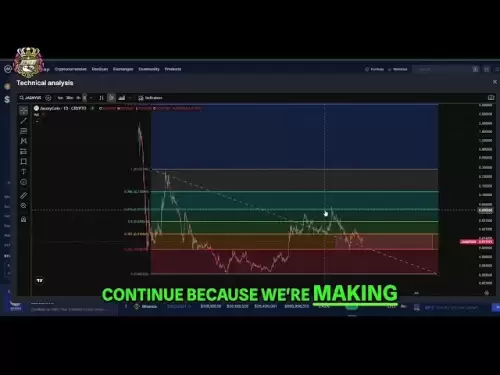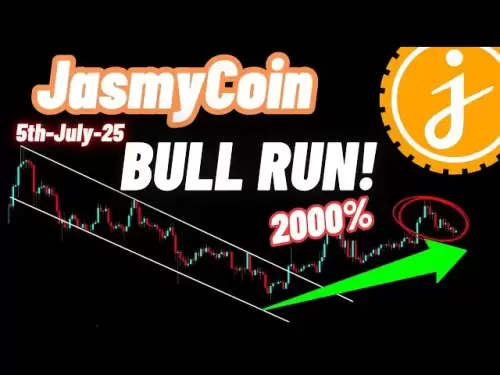-
 Bitcoin
Bitcoin $108,017.2353
-0.81% -
 Ethereum
Ethereum $2,512.4118
-1.58% -
 Tether USDt
Tether USDt $1.0002
-0.03% -
 XRP
XRP $2.2174
-1.03% -
 BNB
BNB $654.8304
-0.79% -
 Solana
Solana $147.9384
-1.76% -
 USDC
USDC $1.0000
-0.01% -
 TRON
TRON $0.2841
-0.76% -
 Dogecoin
Dogecoin $0.1636
-2.09% -
 Cardano
Cardano $0.5726
-1.72% -
 Hyperliquid
Hyperliquid $39.1934
1.09% -
 Sui
Sui $2.9091
-0.59% -
 Bitcoin Cash
Bitcoin Cash $482.1305
0.00% -
 Chainlink
Chainlink $13.1729
-1.54% -
 UNUS SED LEO
UNUS SED LEO $9.0243
-0.18% -
 Avalanche
Avalanche $17.8018
-1.90% -
 Stellar
Stellar $0.2363
-1.69% -
 Toncoin
Toncoin $2.7388
-3.03% -
 Shiba Inu
Shiba Inu $0.0...01141
-1.71% -
 Litecoin
Litecoin $86.3646
-1.98% -
 Hedera
Hedera $0.1546
-0.80% -
 Monero
Monero $311.8554
-1.96% -
 Dai
Dai $1.0000
-0.01% -
 Polkadot
Polkadot $3.3473
-2.69% -
 Ethena USDe
Ethena USDe $1.0001
-0.01% -
 Bitget Token
Bitget Token $4.3982
-1.56% -
 Uniswap
Uniswap $6.9541
-5.35% -
 Aave
Aave $271.7716
0.96% -
 Pepe
Pepe $0.0...09662
-1.44% -
 Pi
Pi $0.4609
-4.93%
How is Bybit's handling fee calculated? A detailed analysis of the fee structure
Bybit's fee structure rewards high-volume traders with lower fees; standard rates are 0.01% for makers and 0.06% for takers, with tiers reducing costs based on 30-day volume and BTC balance.
May 08, 2025 at 06:56 pm
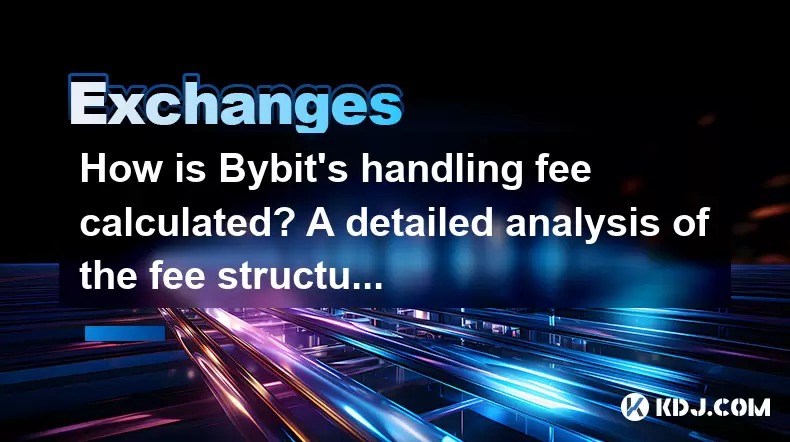
Bybit, one of the leading cryptocurrency exchanges, offers a range of trading options with a competitive fee structure designed to attract both novice and experienced traders. Understanding how Bybit's handling fee is calculated is crucial for traders looking to optimize their trading costs. This article provides a detailed analysis of Bybit's fee structure, breaking down the components that affect the fees and offering insights into how traders can minimize their costs.
Overview of Bybit's Fee Structure
Bybit's fee structure is primarily divided into two categories: maker fees and taker fees. Maker fees are charged when a trader adds liquidity to the order book by placing a limit order that does not immediately execute. Conversely, taker fees are charged when a trader removes liquidity from the order book by placing a market order or a limit order that immediately executes. The distinction between maker and taker fees is fundamental to understanding Bybit's fee calculation.
Maker and Taker Fee Rates
Bybit's standard maker fee is 0.01%, while the standard taker fee is 0.06%. These rates apply to most trading pairs on the platform. However, Bybit offers a tiered fee structure that rewards users with higher trading volumes with lower fees. The fee tiers are based on the user's 30-day trading volume and Bybit Coin (BTC) balance.
- VIP 1: Requires a 30-day trading volume of 500 BTC and a BTC balance of 50. The maker fee is 0.0095% and the taker fee is 0.055%.
- VIP 2: Requires a 30-day trading volume of 2,000 BTC and a BTC balance of 200. The maker fee is 0.009% and the taker fee is 0.05%.
- VIP 3: Requires a 30-day trading volume of 5,000 BTC and a BTC balance of 500. The maker fee is 0.0085% and the taker fee is 0.045%.
- VIP 4: Requires a 30-day trading volume of 10,000 BTC and a BTC balance of 1,000. The maker fee is 0.008% and the taker fee is 0.04%.
- VIP 5: Requires a 30-day trading volume of 20,000 BTC and a BTC balance of 2,000. The maker fee is 0.0075% and the taker fee is 0.035%.
- Pro 1: Requires a 30-day trading volume of 50,000 BTC and a BTC balance of 5,000. The maker fee is 0.007% and the taker fee is 0.03%.
- Pro 2: Requires a 30-day trading volume of 100,000 BTC and a BTC balance of 10,000. The maker fee is 0.006% and the taker fee is 0.025%.
- Pro 3: Requires a 30-day trading volume of 200,000 BTC and a BTC balance of 20,000. The maker fee is 0.005% and the taker fee is 0.02%.
Factors Affecting Bybit's Handling Fees
Several factors can influence the handling fees on Bybit, including the trading pair, the user's trading volume, and their BTC balance.
- Trading Pair: Different trading pairs may have different fee structures. For instance, trading pairs involving less liquid cryptocurrencies might have higher fees to account for the increased risk and volatility.
- Trading Volume: As mentioned earlier, Bybit rewards users with higher trading volumes with lower fees. This incentivizes users to trade more frequently and in larger volumes.
- BTC Balance: Holding a higher balance of Bybit Coin (BTC) can also qualify users for lower fee tiers. This encourages users to keep their funds on the platform.
Strategies to Minimize Handling Fees on Bybit
Traders can employ several strategies to minimize their handling fees on Bybit:
- Use Limit Orders: Since maker fees are significantly lower than taker fees, using limit orders can help reduce trading costs. Limit orders add liquidity to the order book and are less likely to be immediately executed, thus qualifying for the lower maker fee.
- Increase Trading Volume: By increasing their 30-day trading volume, traders can move up the fee tiers and enjoy lower fees. This can be achieved by trading more frequently or in larger volumes.
- Hold BTC: Maintaining a higher BTC balance can also help traders qualify for lower fee tiers. This strategy requires users to keep their funds on the platform, which can be beneficial for those who plan to trade frequently.
Comparing Bybit's Fees with Other Exchanges
To put Bybit's fee structure into perspective, it's helpful to compare it with other leading cryptocurrency exchanges.
- Binance: Binance offers a maker fee of 0.1% and a taker fee of 0.1% for most trading pairs. However, Binance also has a tiered fee structure based on trading volume and BNB holdings, with the lowest fees being 0.012% for makers and 0.024% for takers.
- Kraken: Kraken's standard maker fee is 0.16% and the taker fee is 0.26%. Kraken also offers a tiered fee structure, with the lowest fees being 0% for makers and 0.10% for takers.
- Coinbase Pro: Coinbase Pro charges a maker fee of 0.50% and a taker fee of 0.50%. However, Coinbase Pro also has a tiered fee structure, with the lowest fees being 0% for makers and 0.30% for takers.
Bybit's fees are generally competitive, especially for high-volume traders who can take advantage of the tiered fee structure. The low maker fee of 0.01% is particularly attractive for traders who frequently use limit orders.
Understanding Bybit's Fee Calculation in Practice
To illustrate how Bybit's handling fees are calculated in practice, let's consider a few examples:
- Example 1: A trader places a limit order to buy 1 BTC at a price of $50,000. The order is not immediately executed, so it qualifies as a maker order. If the trader is at the standard fee tier, the fee would be 0.01% of the trade value, which is $5.
- Example 2: A trader places a market order to sell 1 BTC at the current market price of $50,000. The order is immediately executed, so it qualifies as a taker order. If the trader is at the standard fee tier, the fee would be 0.06% of the trade value, which is $30.
- Example 3: A trader with a 30-day trading volume of 5,000 BTC and a BTC balance of 500 qualifies for the VIP 3 fee tier. They place a limit order to buy 1 BTC at a price of $50,000. The order is not immediately executed, so it qualifies as a maker order. The fee would be 0.0085% of the trade value, which is $4.25.
These examples demonstrate how the fee structure and tier system work in practice, highlighting the potential savings for traders who can qualify for lower fee tiers.
Frequently Asked Questions
Q1: Can I reduce my fees by using Bybit's referral program?
A1: Yes, Bybit offers a referral program where users can earn a commission on the trading fees generated by their referrals. This can indirectly help reduce your overall trading costs by generating additional income.
Q2: Are there any hidden fees on Bybit that I should be aware of?
A2: Bybit is transparent about its fee structure, and there are no hidden fees. However, users should be aware of potential withdrawal fees, which vary depending on the cryptocurrency being withdrawn.
Q3: How often does Bybit update its fee tiers?
A3: Bybit updates its fee tiers based on the user's 30-day trading volume and BTC balance. The fee tier is recalculated daily, so users can move up or down the tiers based on their recent trading activity.
Q4: Does Bybit offer any fee discounts for using its native token, Bybit Coin (BTC)?
A4: Bybit does not currently offer direct fee discounts for using Bybit Coin (BTC) for trading. However, holding a higher BTC balance can help users qualify for lower fee tiers, indirectly reducing their trading costs.
Disclaimer:info@kdj.com
The information provided is not trading advice. kdj.com does not assume any responsibility for any investments made based on the information provided in this article. Cryptocurrencies are highly volatile and it is highly recommended that you invest with caution after thorough research!
If you believe that the content used on this website infringes your copyright, please contact us immediately (info@kdj.com) and we will delete it promptly.
- Chainlink's Bullish Blueprint: Price Prediction and the Harmonic Pattern
- 2025-07-06 06:30:12
- Ruvi AI: The Audited Token Promising ROI That'll Make Your Head Spin
- 2025-07-06 06:30:12
- Ethereum Bull Run: Double the Potential in 2025?
- 2025-07-06 06:50:13
- Ruvi AI, Token, and Dogecoin: The Next Big Thing in Crypto?
- 2025-07-06 06:35:13
- Ethereum: Stability and Adoption Fueling Mainstream Finance
- 2025-07-06 07:10:12
- Meme Coins: Will They Jump Again? A New Yorker's Take on the Investment Craze
- 2025-07-06 06:50:13
Related knowledge
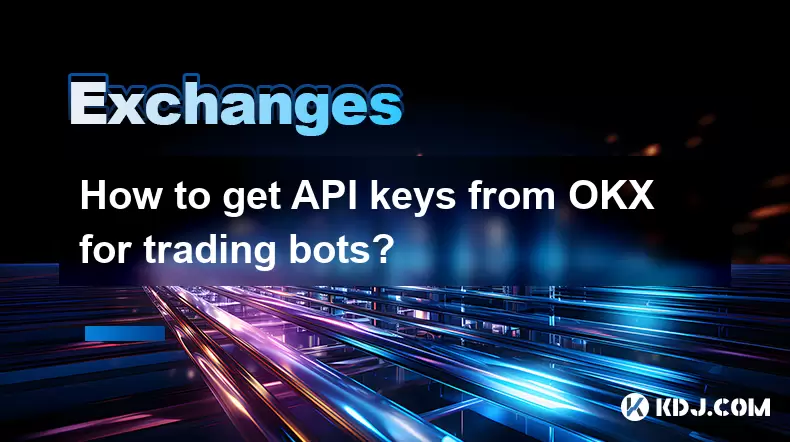
How to get API keys from OKX for trading bots?
Jul 03,2025 at 07:07am
Understanding API Keys on OKXTo interact with the OKX exchange programmatically, especially for building or running trading bots, you need to obtain an API key. An API (Application Programming Interface) key acts as a secure token that allows your bot to communicate with the exchange's servers. On OKX, these keys come with customizable permissions such ...
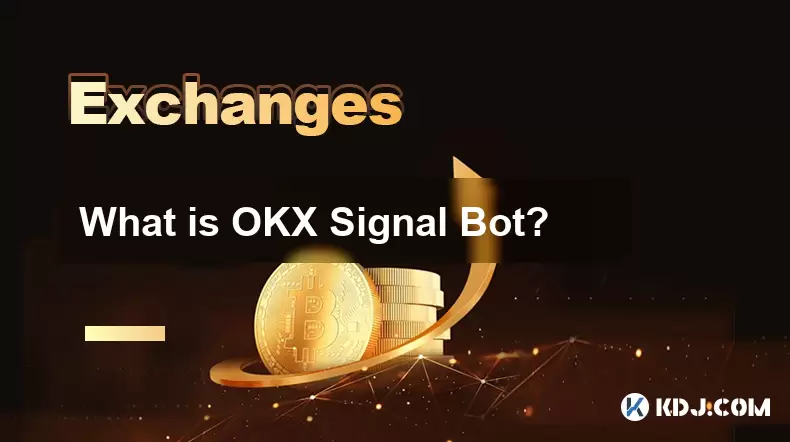
What is OKX Signal Bot?
Jul 02,2025 at 11:01pm
Understanding the Basics of OKX Signal BotThe OKX Signal Bot is a feature within the OKX ecosystem that provides users with automated trading signals and execution capabilities. Designed for both novice and experienced traders, this bot helps identify potential trading opportunities by analyzing market trends, technical indicators, and historical data. ...
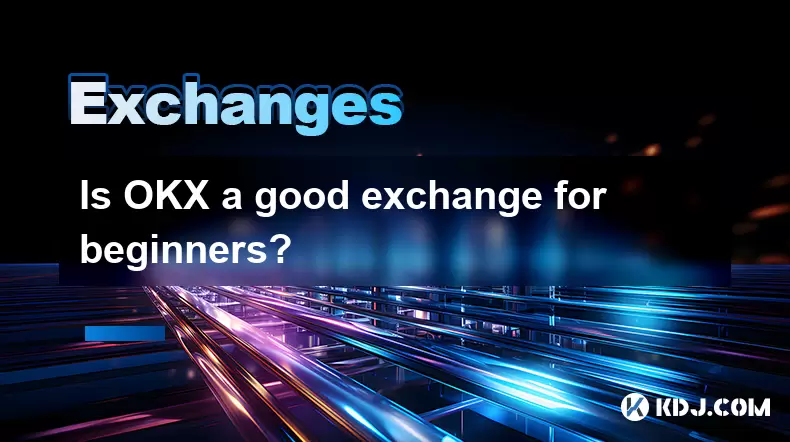
Is OKX a good exchange for beginners?
Jul 03,2025 at 05:00pm
What Is OKX and Why Is It Popular?OKX is one of the leading cryptocurrency exchanges globally, known for its robust trading infrastructure and a wide variety of digital assets available for trading. It supports over 300 cryptocurrencies, including major ones like Bitcoin (BTC), Ethereum (ETH), and Solana (SOL). The platform has gained popularity not onl...
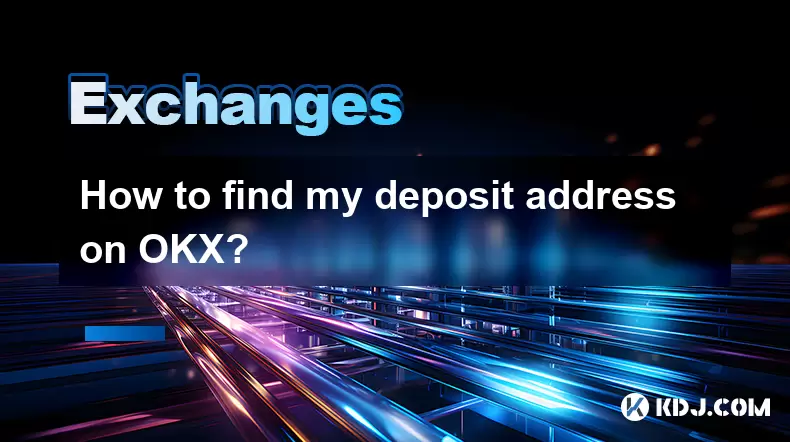
How to find my deposit address on OKX?
Jul 06,2025 at 02:28am
What is a Deposit Address on OKX?A deposit address on OKX is a unique alphanumeric identifier that allows users to receive cryptocurrencies into their OKX wallet. Each cryptocurrency has its own distinct deposit address, and using the correct one is crucial to ensure funds are received properly. If you're looking to transfer digital assets from another ...
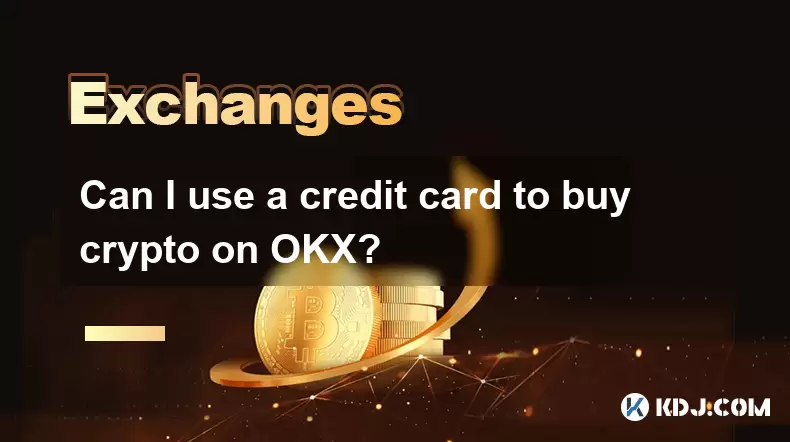
Can I use a credit card to buy crypto on OKX?
Jul 04,2025 at 04:28am
Understanding OKX and Credit Card PaymentsOKX is one of the leading cryptocurrency exchanges globally, offering a wide range of services including spot trading, derivatives, staking, and more. Users often wonder whether they can use a credit card to buy crypto on OKX, especially if they are new to the platform or looking for quick ways to enter the mark...
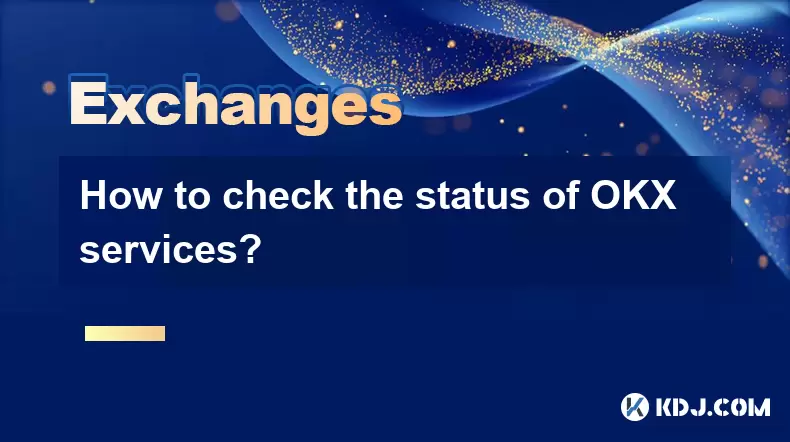
How to check the status of OKX services?
Jul 02,2025 at 11:14pm
What is OKX, and Why Checking Service Status Matters?OKX is one of the world’s leading cryptocurrency exchanges, offering services such as spot trading, futures trading, staking, and more. With millions of users relying on its platform for daily transactions, it's crucial to know how to check the status of OKX services. Downtime or maintenance can affec...

How to get API keys from OKX for trading bots?
Jul 03,2025 at 07:07am
Understanding API Keys on OKXTo interact with the OKX exchange programmatically, especially for building or running trading bots, you need to obtain an API key. An API (Application Programming Interface) key acts as a secure token that allows your bot to communicate with the exchange's servers. On OKX, these keys come with customizable permissions such ...

What is OKX Signal Bot?
Jul 02,2025 at 11:01pm
Understanding the Basics of OKX Signal BotThe OKX Signal Bot is a feature within the OKX ecosystem that provides users with automated trading signals and execution capabilities. Designed for both novice and experienced traders, this bot helps identify potential trading opportunities by analyzing market trends, technical indicators, and historical data. ...

Is OKX a good exchange for beginners?
Jul 03,2025 at 05:00pm
What Is OKX and Why Is It Popular?OKX is one of the leading cryptocurrency exchanges globally, known for its robust trading infrastructure and a wide variety of digital assets available for trading. It supports over 300 cryptocurrencies, including major ones like Bitcoin (BTC), Ethereum (ETH), and Solana (SOL). The platform has gained popularity not onl...

How to find my deposit address on OKX?
Jul 06,2025 at 02:28am
What is a Deposit Address on OKX?A deposit address on OKX is a unique alphanumeric identifier that allows users to receive cryptocurrencies into their OKX wallet. Each cryptocurrency has its own distinct deposit address, and using the correct one is crucial to ensure funds are received properly. If you're looking to transfer digital assets from another ...

Can I use a credit card to buy crypto on OKX?
Jul 04,2025 at 04:28am
Understanding OKX and Credit Card PaymentsOKX is one of the leading cryptocurrency exchanges globally, offering a wide range of services including spot trading, derivatives, staking, and more. Users often wonder whether they can use a credit card to buy crypto on OKX, especially if they are new to the platform or looking for quick ways to enter the mark...

How to check the status of OKX services?
Jul 02,2025 at 11:14pm
What is OKX, and Why Checking Service Status Matters?OKX is one of the world’s leading cryptocurrency exchanges, offering services such as spot trading, futures trading, staking, and more. With millions of users relying on its platform for daily transactions, it's crucial to know how to check the status of OKX services. Downtime or maintenance can affec...
See all articles





















